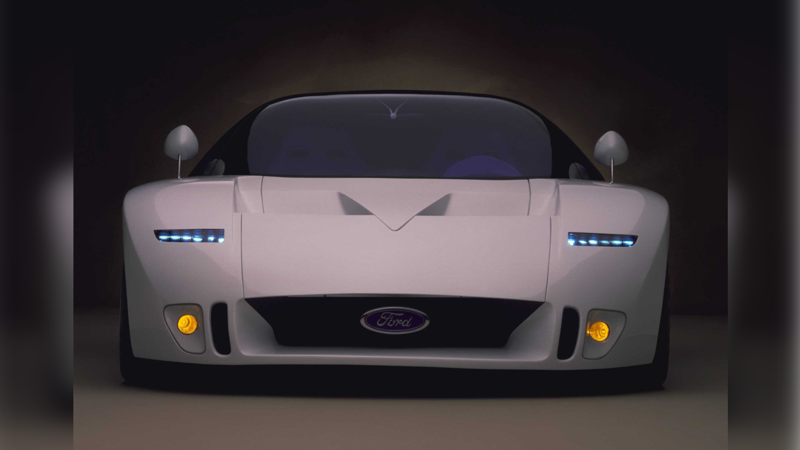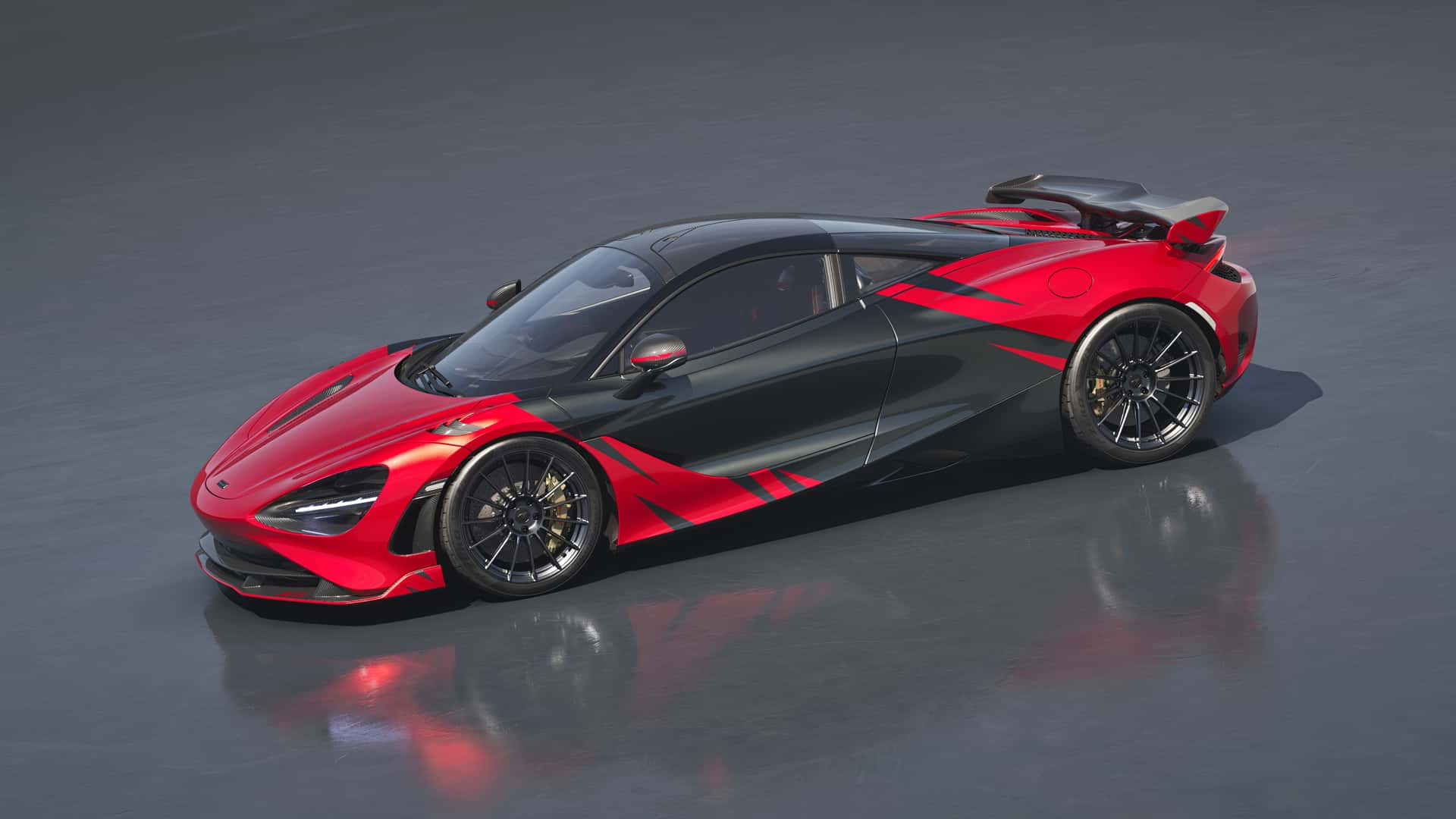McLaren's First Road Car Was Powered By A Chevy V8
McLaren is one of the forefront brands in the high-performance segment. Its vast and varied models all share a commonality: segment-shaking performance. The brand has established itself as a marque filled with exciting road cars, from its relatively tamed GT models to its otherworldly hypercars like the McLaren Sabre.

318-1.png
McLaren
McLaren Automotive is a manufacturer of sports cars, supercars, and hypercars based in Woking in the United Kingdom. It was launched by Ron Dennis as a spin-off from the McLaren F1 team, and as such, is named after Bruce McLaren. It is famed for its F1-inspired development of high-performance sports cars, supercars, and hypercars like the F1 - the first official roadgoing project from the automaker - and more recent projects like the P1 and McLaren Senna. McLaren was recently purchased by the Mumtalakat Holding Company, a sovereign wealth fund of the Kingdom of Bahrain.
Recently, the automaker introduced the revival of its "1" bloodline with the McLaren W1 and revitalized one of its most prolific nameplates in the form of the hardcore McLaren 720S. The British automaker's road cars are a force to be reckoned with, and it all began with the McLaren M6GT.
This article focuses on the history of the McLaren M6GT and the McLaren M6A.
It All Begins With A Race Car
Like many high-performance cars of yore, the McLaren M6GT's origins can be traced back to a thoroughbred race car called the McLaren M6A. This was a sultry racer, akin to the original Speed Racer, a prototype race car developed by the founder of McLaren Racing, Bruce McLaren. McLaren is remembered as a seasoned racing driver, automotive designer, engineer, and executive with an unrelenting drive to race and innovate. The M6A was built by the Bruce McLaren Motor Racing Team to compete in the Group 7 racing series and was developed during the off-season in 1967.

1967 McLaren M6A Orange High Front Angle
The M6A was underpinned by the first monocoque chassis built by McLaren, while its shapely figure was designed to maximize downforce and optimize it for the Can-Am circuits. Still, the most noteworthy aspect of the McLaren M6A was its engine. At the center of the McLaren M6A was a heavily modified version of a 5.9-liter Chevrolet V8 engine, which McLaren's engineering team developed fuel injection for the Chevy powerplant. The first race-ready McLaren M6A was finished by 1967, and shortly after, Bruce McLaren's racing team completed 2,000 miles in preparation for the Can-Am season, which would see two examples of the M6A take the field.
McLaren's M6A secured pole position in its first outing and set a track record. Denny Hulme piloted the second car, which led the race. Obstacles and hurdles are par for the course in motorsports, which was aplenty in the 1967 Can-Am season. Still, ultimately, Bruce McLaren secured the Can-Am Challenge Cup, with Hulme securing second. The M6A would succeed the M8A, but the M6 moniker would return for the 24 Hours of Le Mans, called the McLaren M6GT. This track-only model would evolve into the road-going M6A, McLaren's first road-going car.
Race Inspired And Race Ready

1969 McLaren M6GT Orange Front Angle
After the M6A, Bruce McLaren's sights were set on creating the fastest, quickest accelerating, and highest specification road car in the world, ergo the McLaren M6GT. The first rendition of the M6GT was a race car that would be homologated for the Group 4 racing series. Still, this venture would ultimately lead nowhere because of financial constraints and shifting rules, and only a handful of M6GT prototypes were created. However, from these prototypes, two models were converted for road use, with one becoming Bruce McLaren's personal car used to ferry the famed New Zealander to work and race meetings.
Engine | 5.7L NA Chevy V8 |
|---|---|
Horsepower | 370 bhp @ 5,800 rpm |
Torque | 370 lb-ft @ 4,000 rpm |
0-62 | 4.2 seconds |
Top speed | 165 mph |
The road-going M6GT was intended to be founded on the M6's aluminum monocoque chassis. It was essentially a road-legal race car devoid of the amenities regular road cars had, and was just as impractical as a race car. The road car was a low-slung two-seater sports car with pronounced haunches and butterfly doors. However, like the M6A, the road-going M6GT featured a 5.7-liter Chevrolet small-block V8 engine tuned by Al Bartz, an engine builder who worked for Traco Engineering, and featured elements like four Weber 45 downdraught carburetors. This Bartz-tuned V8 engine was paired with a ZF five-speed manual transmission, and power was directed exclusively to the rear wheels.

Mclaren-Mustang-2
Once Upon A Time, McLaren Helped Ford With The Iconic Mustang
Who knew the Brits at McLaren had a hand in designing a turbocharged Mustang?
The first McLaren M6GT prototype, registered OBH 500 H, was completed in early 1970 and finished in red. This was the model that Bruce McLaren used to benchmark the brand's future road cars. Some distinguishing elements of the road-going model included a fully trimmed interior, retractable headlights, a more forgiving suspension system, and a thicker fiberglass body than the race car it was based on. It was an extremely appealing prototype that envisioned an exciting batch of high-strung road cars that would have been capable of rivaling some of the best and boldest models available at the time, but unfortunately, the McLaren M6GT wouldn't make it to the production stage.
A Dream Never Realized

1969 McLaren M6GT Red Low Front Angle
Initially, Bruce McLaren's vision for the M6GT was a production run of 250 units, but ultimately, only two prototypes would be created, one finished in red and the other finished in the iconic McLaren orange. McLaren approached Peter Agg of Trojan, a British automaker that had been building customer race cars for McLaren, and offered a deal to help build the 250 McLaren M6GT models. However, the McLaren M6GT project would never be realized as the untimely death of Bruce McLaren resulted in the McLaren M6GT project being shelved.

Ford GT90
The Fascinating Story Of Ford's Failed McLaren F1 Rival
The Ford GT90 was destined for greatness, but never quite made it that far. Let's explore the history of this forgotten concept car.
Including the prototype that Bruce McLaren owned, which would be sold to Denny Hulme and Phil Kerr after Bruce McLaren's death, Trojan built another McLaren M6GT. This example of the road-legal M6GT would be featured on the 1974 cover of Road & Track magazine. While McLaren's ultra-light and extremely fast pioneering road car would not live up to its creator's dream, it is considered the spiritual predecessor to the brand's most prolific model, the McLaren F1. It would debut two decades after the M6GT prototypes were created and achieved all the goals that Bruce McLaren laid out for the M6GT. Although the 250 examples were never brought to life, the McLaren M6GT remains the manufacturer's first road car.









































